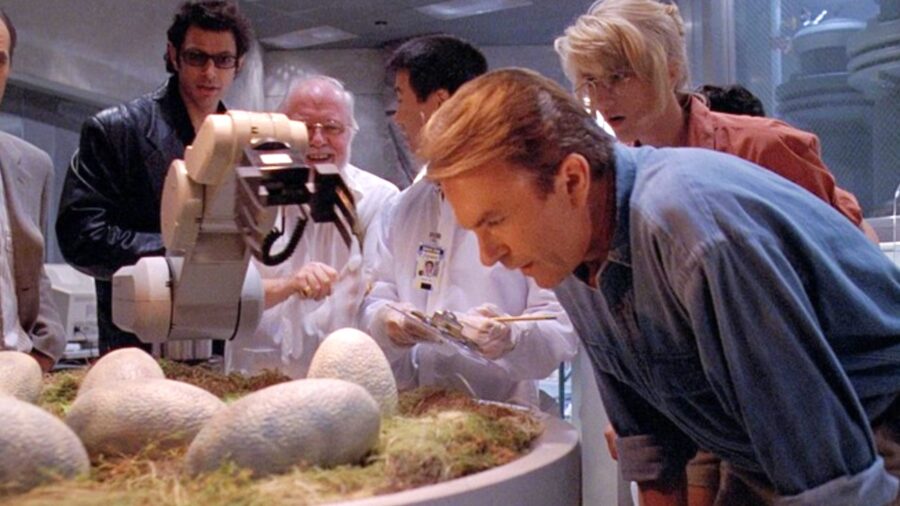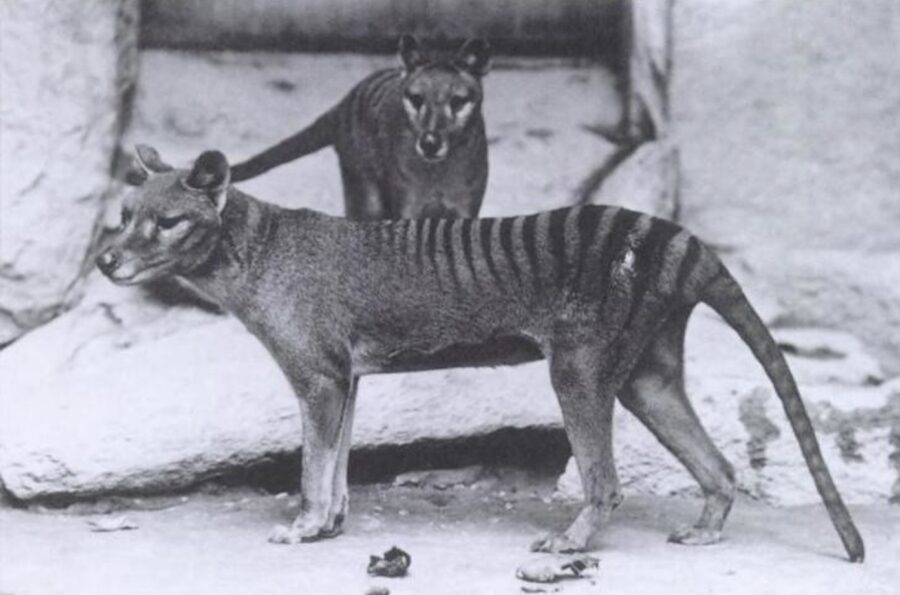Extinct Predator Being Resurrected, Jurassic Park Becoming Real?

Earth.com reports that the Tasmanian tiger, an animal that has been recorded as extinct since 1936, has the potential to be resurrected and reintroduced into the living world. Researchers have successfully been able to reconstruct the Tasmanian tiger’s RNA sequence, and at this point in time they have been able to reconstruct the skin and skeletal muscles from a preserved specimen that’s over 100 years old. This marvel of modern science is highlighted in a study written by Emilio Mármol, and provides a detailed look into the Tasmanian tiger’s RNA.
The Tasmanian tiger was a carnivorous marsupial and an apex predator across Australia and the island of Tasmania. Unlike the common bi-pedal kangaroo, the Tasmanian tiger bears a striking resemblance to a wolf with tiger stripes, and had a top speed of 24 miles-per-hour while running at full tilt.
The last known living Tasmanian tiger died in captivity in 1936, but thanks to modern science, a working sample of its RNA could bring the species back.
Their diet consisted primarily of birds, lizards, and smaller mammals, but when they were deemed an agricultural nuisance by colonists, they were pushed out of their natural habitat, and their population dwindled to the point of extinction.
The last known living Tasmanian tiger died in captivity in 1936, but thanks to modern science, a working sample of its RNA has been preserved at the Swedish Museum of Natural History, and is critical to our understanding of and ability to resurrect not only the Tasmanian tiger, but other animals that have met a similar fate.

And as luck may have it, the carnivorous marsupial’s native habitat remains largely intact, meaning that if the Tasmanian tiger is introduced back into the environment, it will have the potential to restore the ecosystem in which it was once an apex predator, and restore balance.
But if the Tasmanian tiger is successfully resurrected and re-introduced into its former ecosystem, the act of cloning may change its behavior, or cause it to fulfill a different ecological role than its pre-extinction predecessor.
The Tasmanian tiger bears a striking resemblance to a wolf with tiger stripes
Since cloning involves implanting the DNA of an extinct species into the egg of a closely related living counterpart, there are slight mutations that need to be considered. In other words, if the Tasmanian tiger is brought back, it may have a slightly different diet, and behave in ways that don’t necessarily reflect how it behaved in the past.
As exciting as the prospect of cloning the Tasmanian tiger may be, critics are worried about the ecological impact of resurrecting other extinct animals. In this instance, there is a clear geographical area for the species to thrive if reintroduced into the ecosystem, but this isn’t necessarily the case for regions in which other species no longer have a natural habitat to return to.
In fact, bringing a long-extinct animal back to life in a region that they’ve been removed from decades or centuries ago could adversely affect the natural order that has been established in their absence.
Another factor to consider is where researchers spend their energy. While they’re working on bringing animals like the Tasmanian tiger back to life from extinction, scientists can’t help but wonder if this energy could be better spent by preventing other endangered species from facing extinction themselves.
If the Tasmanian tiger is brought back, it may have a slightly different diet, and behave in ways that don’t necessarily reflect how it behaved in the past.
As scientists continue to debate the ethics and ecological ramifications of resurrecting the Tasmanian tiger, it’s safe to say that we’re one step closer to Jurassic Park territory. But Ian Malcolm’s concerns still remain valid; just because we could doesn’t necessarily mean that we should. Needless to say, the current research is absolutely mind-blowing.












